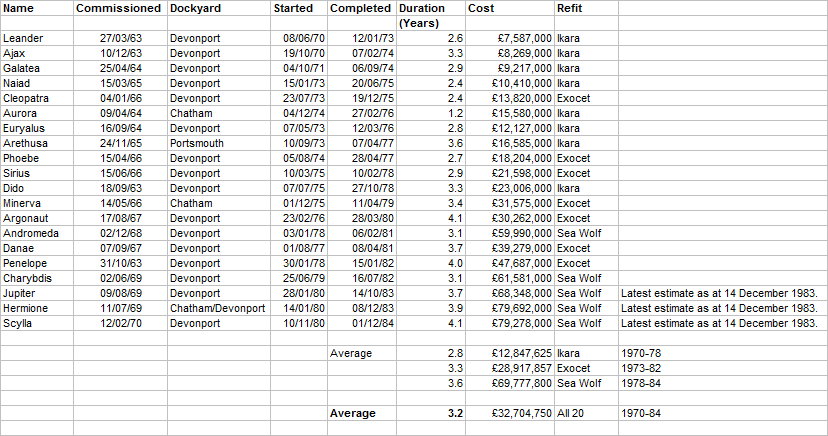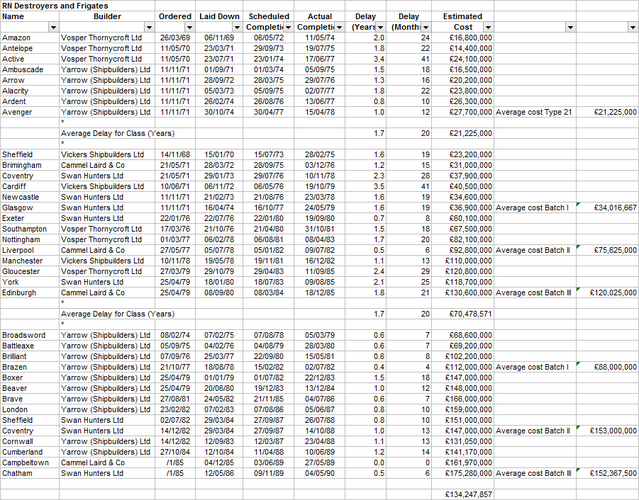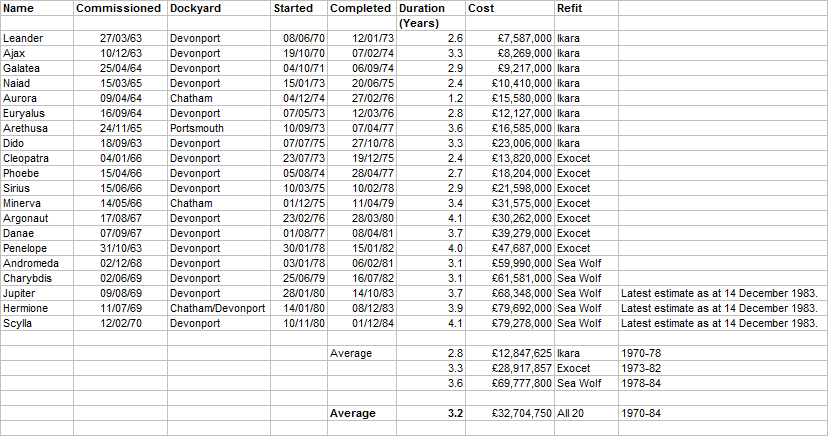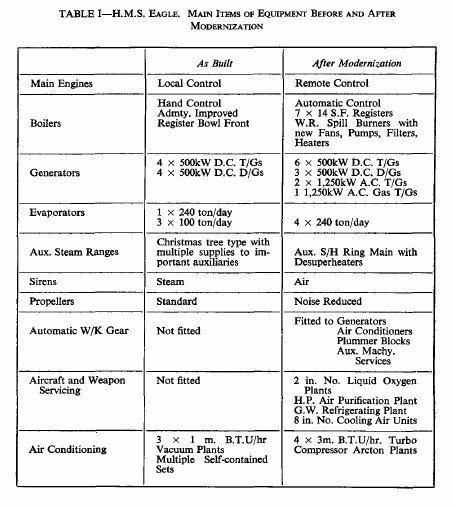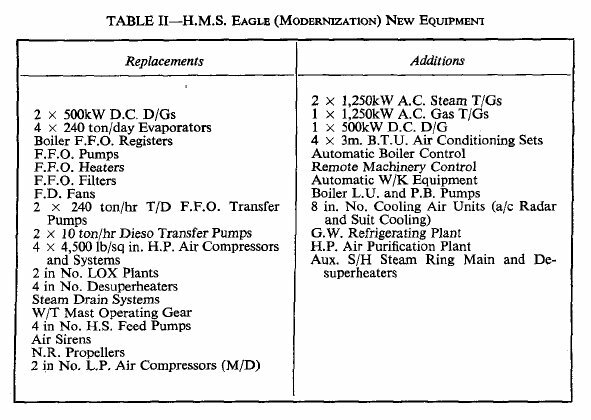Based on the historical position I agree the build schedule seems optimistic. Particularly in view of the industrial strife in the shipbuilding industry at the time. There was also massive reorganisation and consolidation in the industry as a result of the 1966 Geddes Report.The above timetable shows that the ship was to be built in 4¾ years, which is the time allowed between laying down and acceptance.The timescale was probably impossible to meet. Key points:-
Design ready - Jan 1966 achieved.
Tender period - Jan-Jun 1966. I’ll come back to this
Order - end of Sept 1966
Lay down - Sept 1967
Launch -Sept 1969
Acceptance - June 1972
Fully operational June 1973
In view of the time overruns of other ships built for the Royal Navy in the 1970s completing CVA.01 on schedule would be a positive miracle.
Now in this alternative history we have at least one, possibly up to three, very large high value / high skill contracts being awarded from 1966 beyond the capabilities of all bar one individual company. With more work in the yards, particularly on the Clyde, from these contracts who knows if it might have led to greater stability in the industry, less strikes, and shorter build times.
Upper Clyde Shipbuilders - Wikipedia
Strikes in the UK
The other problem of course is the budget for this project, particularly in view of the prevailing U.K. inflation rates. Does that lead to elongation of the programme to allow the money to become available.
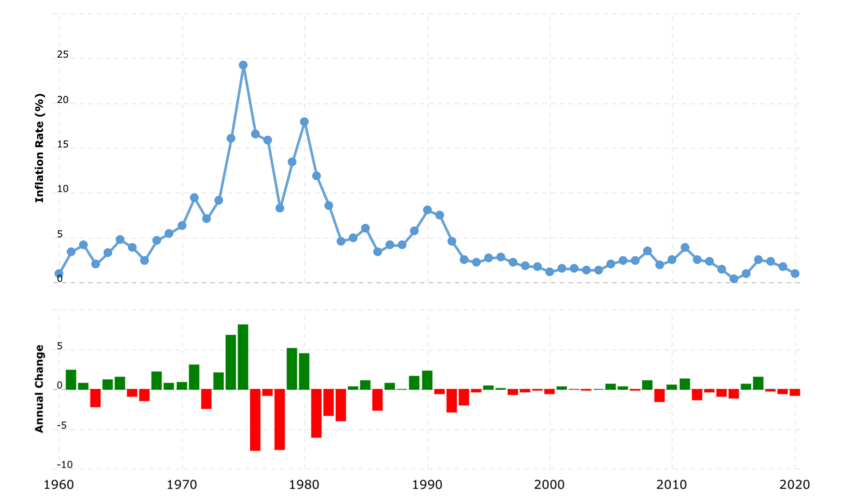
Last edited:

